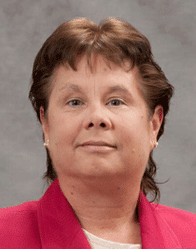Season 1 – Episode 29 – Admissions: Undergraduate, Graduate, & Transfer Students
University admission is an integral part of the overall college experience. An admissions department at an institution provides support to students who are applying to enroll at an institution. While the admissions system might differ from institution to institution, an admissions department can support incoming first-year students, transfer students, and graduate students in navigating the application process. Since the onset of COVID-19, the admissions landscape has changed to a degree, with students opting to stay closer to their homes and many institutions changing admissions requirements into different degree programs.
Episode Transcript
Click to expand/collapse
Darren Gaddis: From CITI Program, I’m Darren Gaddis and this is On Campus. Today, what is an admissions department? The difference between undergraduate and graduate admissions and how COVID-19 has impacted college and university admissions. I spoke with Denise O’Neill, the director of enrollment management at Penn State University Lehigh. Her primary responsibilities include admissions, financial aid, various grant funded student success programs, and Title IX.
As a reminder, this podcast is for educational purposes only. It is not intended to provide legal advice or guidance. You should consult with your organization’s attorneys if you have questions or concerns about relevant laws and regulations discussed in this podcast. Additionally, the views expressed in this podcast are solely those of the presenter.
Hi Denise, thank you for joining me today.
Denise O’Neill: Thank you so much for having me.
Darren Gaddis: To get us started today, what functionality does an admissions department serve at an institution?
Denise O’Neill: Within a centralized admissions environment, the admissions department usually determines students and the applicant’s admissibility to a college or university. What takes place is that they evaluate a full application, including evaluating transcripts, and also may assign students to appropriate academic units depending on preferences that are indicated. That varies from university to university, whether preferences are required or recommended, because in this day and age, most students are flexible with their academic pathway. They also advise potential students on all the admissions requirements and the many options that may be available. Options are often complicated, so having admissions representatives meet one-on-one and in large group settings with candidates is really important. They also advise potential students on the transfer agreements that we have. Often we have community college partnerships and transfer agreements, so becoming familiar with the articulation language and specifics is really important for transfer students, especially for the community college setting.
And then finally, in this day and age, with everything being submitted electronically, verifying accuracy of information and making sure applicants have complete information for review and doing a lot of the follow-up with candidates to make sure that they’re aware that they’re missing a component is an important part of the process. And then finally, once a student arrives, the work is not done. Retention and persistence to graduation are important. And admissions representatives continue the relationship with students that have went from applicant to student and we continue that relationship so that we can contribute to the persistence rates and retention rates.
Darren Gaddis: With that information, how does an admissions department serve as a resource for incoming students?
Denise O’Neill: First of all, I think the admissions representative and the admissions department is the first step towards, hopefully, is a lifelong relationship between the student and the university. I like to say that few things in life are forever, but your relationship with your undergraduate college education is a lifelong commitment. The resource that admissions departments serve is that they help with the admissions requirements, they break down all of the eligibility aspects because different academic areas have different eligibility requirements prior to the applicant becoming a candidate for particular programs. And they also look at program options. We used to call them majors, but now they’re academic pathways and program options. And then there’s also the logistics; residency requirements. Especially for state universities and community colleges, there are county and state residency requirements. And those are some backdrop aspects that we don’t always think about, but students and families want to know; cost factors and residency for state and community colleges residency requirements.
Darren Gaddis: In what ways does an admissions department serve transfer students differently than incoming freshman students?
Denise O’Neill: For sure, transfer students have different needs than first time students. The criteria for admission is much the same for both new and transfer students, but how we service both group differs. For example, a common question will be, “How long will it take for me to graduate?” Time and cost are essential factors for transfer students. So number one, an accurate review of transfer credentials and transfer credits is essential. Candidates want to know beforehand which credits will transfer into the university. Because often transfer students will narrow their pool of universities down to one or two, whereas if you’re a first time student, you might have a much larger pool of universities that you’re interested in.
Also, does that university have my academic pathway, either a new one or my current one? And will you accept transfers into that program? Sometimes we have controlled programs where you have to receive a majority of your major requirements at the university that you’re transferring to. So may I enter the program if I have X number of credits that are already completed in nursing or engineering, et cetera. Often, transfer students don’t think about that aspect when they’re transferring very late in their career. And also, does the program limit the number of transfer students annually? For example, sometimes folks already have a cohort for a particular major, so the admissions department has to work collaboratively with academic departments with spaces that may be available based on attrition.
And then finally, beyond academics, working with students to say, “What are you looking for in terms of a campus culture that you might see yourself participating in?” And that includes research opportunities, extracurricular clubs, athletic participation, community service, or internship placement. Campus culture is also something that we talk about when we are talking with prospective students.
Darren Gaddis: In kind of the same line of thought, how does graduate degree admissions differ from undergraduate degree admissions?
Denise O’Neill: Generally speaking, undergraduate admissions process is usually centralized. So the admissions personnel determine final decisions on acceptances, a rejection or a wait list for particular candidates coming in. Faculty and staff and administration have input on criteria, of course, before applications are received. That’s done well in advance. Their role at an undergraduate admissions office that’s centralized is to include being the point of contact for questions, planning large scale programs for large groups during the academic year, and also conducting visits going offsite to go to different states and different regions to visit high schools in their own territory. And also to attend community events, community events in your region and in your state. And finally, connecting with community colleges for transfer students that might be coming in.
Graduate school is a little bit different. Generally speaking, faculty themselves review smaller number of applicants for master’s degree programs and doctoral programs or professional programs. Faculty including to the department chair themselves, read, review, select, and also offer acceptances. It’s decentralized process based on academic unit and specialty, but graduate admissions might offer guidance, support and assistance with logistics and planning.
Darren Gaddis: Thinking about the impact of COVID-19, what is the largest change you have seen in college and university admissions?
Denise O’Neill: Oh, there’s so many to mention. I’ll just mention a couple that come to mind. One, I think I see students traveling a shorter distance to attend college. I saw some articles in Inside Higher Education and the Chronicle of Higher Education that say that students, even if they’re going to participate in a residential campus, are only traveling 70 to 90 miles from their hometown. So they’re traveling close to home even if it’s a residential experience. And I think that’s a change. We used to see larger amounts and we had some of the states like New Jersey and Alaska that have mass exodus, they would go all over the country. But now we see people only traveling within 70 to 90 miles or less of their hometown. Another change is that people are more cost conscious. Many are considering a community college option first, and then they might look to transfer to a four-year college.
And then finally, something that has become more relevant is what we call a stackable education. It’s becoming more popular since COVID. It was relevant beforehand, but it’s now becoming more popular. And I define that in two different ways. Number one, it could be a sequence of credentials that can be accumulated over time to build qualifications. For example, can I get a bachelor’s degree and a master’s degree at the same institution in five years, but have both degrees in a shorter period of time? It saves time on task and saves money. Another way is to build my personal brand that means something to me today and in the future. For example, can I combine all of my professional interest at one institution by maximizing academic pathways? Can I get a major, two minors in a concentration that develops a brand that separates me from all of my classmates? Because it’s unique by combining all of those bachelor degree options. So those are some of the key changes I’ve seen since COVID.
Darren Gaddis: What is something you wish incoming students knew about the admissions department at an institution?
Denise O’Neill: Well I’m going to fully offer disclosure, I spent most of my career in student affairs. I was an assistant dean and associate dean and the dean of students, and I transitioned over to enrollment. I had a specialty in retention as well as strategic planning, so it was an easy transition. But I wish I would’ve known, and I wish our students and families would know about the different types of college admissions processes. They’re not as familiar and they’re not whole and pure, they’re actually hybrids of one another. But we have like regular admissions, you have rolling admissions, early decision, early action, early evaluation. You have deferred admission. How long can I defer for? What does it mean if I defer? And also open admission.
And every distinctive type of college offers different types of admissions processes, and often colleges combine all of the different ones. And the most common element that causes confusion is the difference between early decision and early action. People use the language interchangeably. Early decision is binding. Early action is not. Often we use early action, like at Penn State, we use early action where you get an early jump on a decision if you get your application in before a date and it relieves the pressure and you have information to make your final decision. But I wish people knew a little bit more about the different admissions processes so that it would help them when they’re applying and learning a little bit about timelines that apply to the application process.
Darren Gaddis: What else should we know about an admissions department at an institution?
Denise O’Neill: I wish there was a greater connection between K through 12 and the college and university setting. Often we say that students are prepared differently than past generations. And I think that if we had closer connections between K through 12 and colleges and universities, we would be more prepared to meet students where they’re at, and also career industries would be more prepared. For example, if we had more industry connections as well, on the other side, we would be able to fulfill local, regional, state, and global career networking holes that we have and it would really help our economy and it would help to build bridges between the different educational systems and make sure people are prepared for careers that are available. So that’s number one.
Secondly, this is something that’s really near and dear to me working in admissions is that not all high schools are created equal. We need to take collective responsibility to address this aspect. Students come to us at times ill prepared for some, not all, but for some college level work. And I think it’s our responsibility to meet them where they’re at and offer effective programs and services to prepare them for college level work. Especially in areas such as math, as it relates to STEM fields, and also as it relates to analytical work and predictive modeling, which is a part of every profession. And also to prepare people for effective writing and effective speech. These are skill sets that are used in every environment. Instead of denying admission, we need to recognize the academic trends that are out there and respond accordingly. It’s unfair to say that students are ill prepared, but our educational systems are ill prepared, so we need to take collective responsibility for making some changes in those areas.
Darren Gaddis: Thank you for joining me today.
Denise O’Neill: Thanks for having me.
Darren Gaddis: Be sure to follow, like, and subscribe to On Campus with CITI Program to stay in the know. I also invite you to review our content offerings regularly as we are continually adding new courses and webinars that may be of interest to you. All of our content is available to you anytime through organizational and individual subscriptions. You may also be interested in CITI Program’s Title IX: 50 years and Modern Challenges webinar. Please visit the CITI Program’s website to learn more about all of our offerings.
How to Listen and Subscribe to the Podcast
You can find On Campus with CITI Program available from several of the most popular podcast services. Subscribe on your favorite platform to receive updates when episodes are newly released. You can also subscribe to this podcast, by pasting “https://feeds.buzzsprout.com/1896915.rss” into your your podcast apps.
Recent Episodes
- Season 1 – Episode 28: Workforce Development in STEM
- Season 1 – Episode 27: Academic Career Pathways (Part 2)
- Season 1 – Episode 26: Academic Career Pathways (Part 1)
- Season 1 – Episode 25: Title IX: Women in Athletics
Meet the Guest

Denise O’Neill – Penn State University, Lehigh Valley
Denise O’Neill is currently the Director of Enrollment Management at Penn State Lehigh. Primary responsibilities include admissions, financial aid, various grant-funded student success programs, and Title IX. With over 25 years of progressive experience in leadership, administration, teaching and supervision in higher education, she has served in various leadership roles.
Meet the Host
Darren Gaddis, Host, On Campus Podcast – CITI Program
He is the host of the CITI Program’s higher education podcast. Mr. Gaddis received his BA from University of North Florida, MA from The George Washington University, and is currently a doctoral student at Florida State University.








